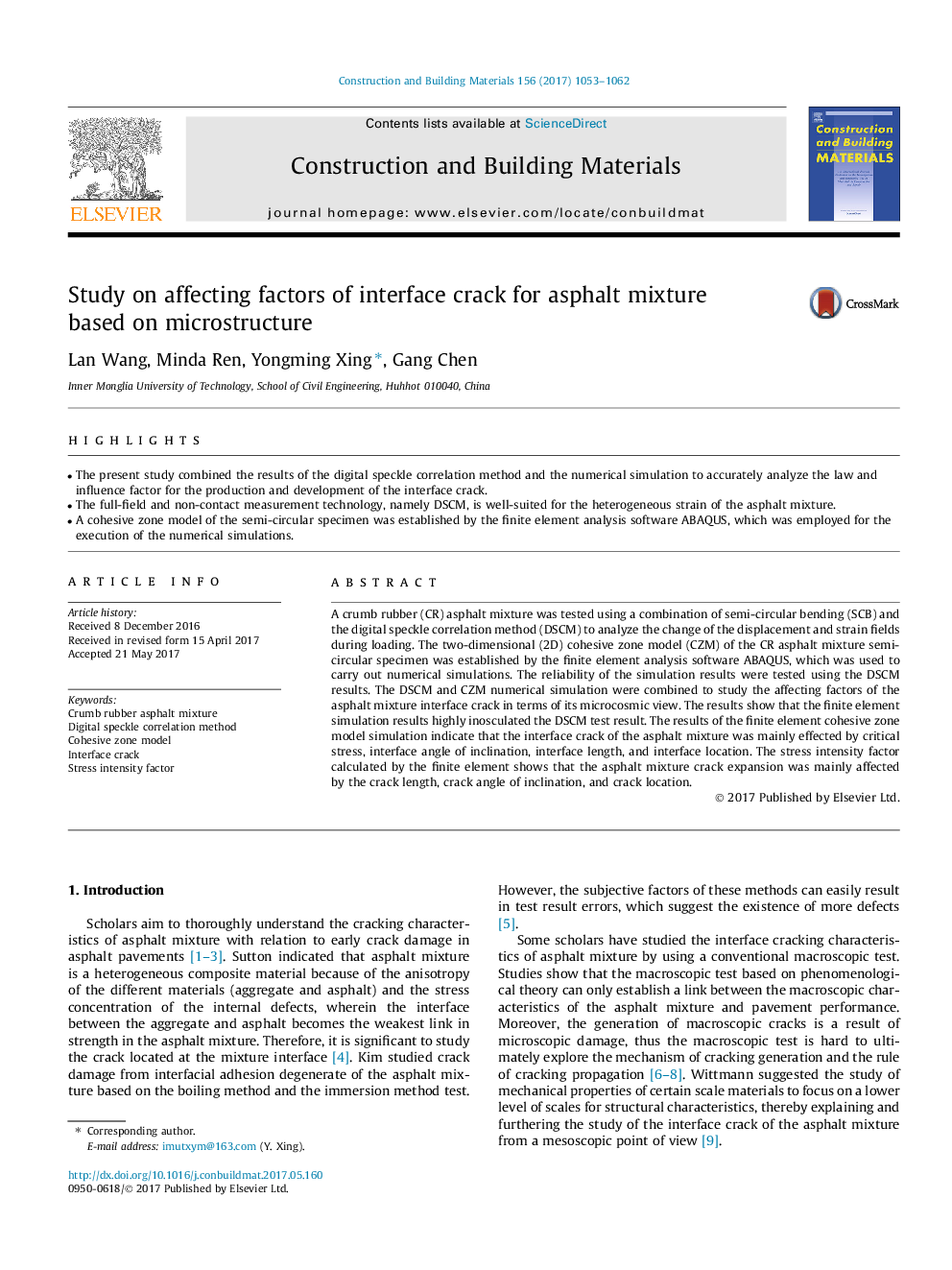| Article ID | Journal | Published Year | Pages | File Type |
|---|---|---|---|---|
| 4912730 | Construction and Building Materials | 2017 | 10 Pages |
Abstract
A crumb rubber (CR) asphalt mixture was tested using a combination of semi-circular bending (SCB) and the digital speckle correlation method (DSCM) to analyze the change of the displacement and strain fields during loading. The two-dimensional (2D) cohesive zone model (CZM) of the CR asphalt mixture semi-circular specimen was established by the finite element analysis software ABAQUS, which was used to carry out numerical simulations. The reliability of the simulation results were tested using the DSCM results. The DSCM and CZM numerical simulation were combined to study the affecting factors of the asphalt mixture interface crack in terms of its microcosmic view. The results show that the finite element simulation results highly inosculated the DSCM test result. The results of the finite element cohesive zone model simulation indicate that the interface crack of the asphalt mixture was mainly effected by critical stress, interface angle of inclination, interface length, and interface location. The stress intensity factor calculated by the finite element shows that the asphalt mixture crack expansion was mainly affected by the crack length, crack angle of inclination, and crack location.
Keywords
Related Topics
Physical Sciences and Engineering
Engineering
Civil and Structural Engineering
Authors
Lan Wang, Minda Ren, Yongming Xing, Gang Chen,
